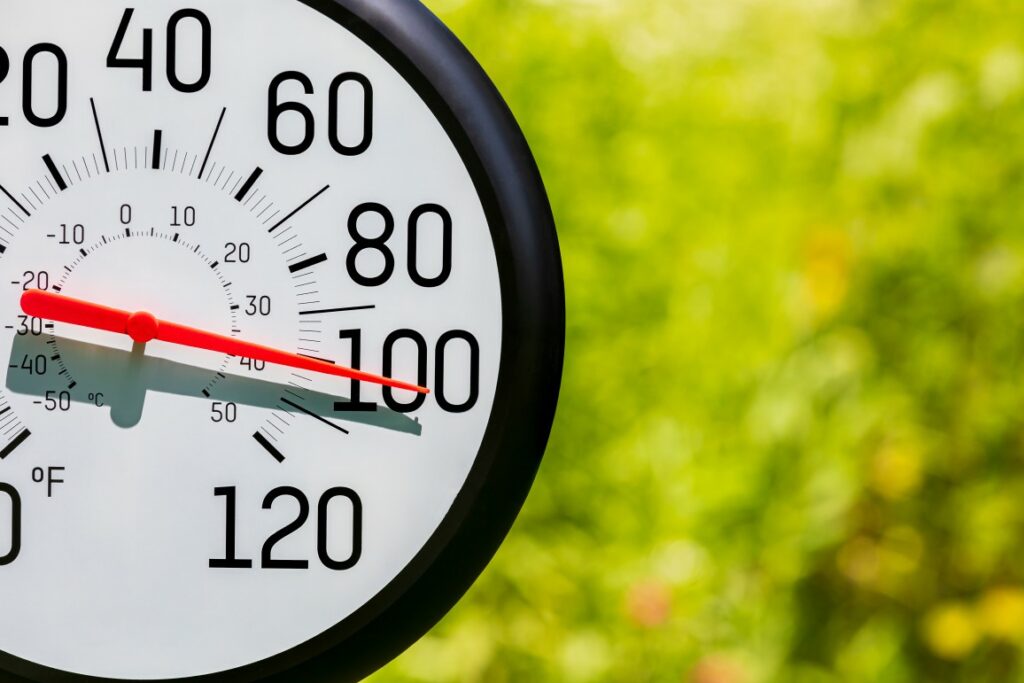
Heavy Rain, Flooding, and Chance of Severe Weather Staring Down the Southern U.S.
January 22, 2024
Posted: June 29, 2022 12:23 pm





A heat dome is camping out over Alaska, triggering the onset of record-breaking temperatures to usher in the beginning of July. This unseasonable heat will only serve to worsen the already dry conditions that have triggered a record fire season this year.
While Alaska is not typically distinguished for its warmth, a heat dome building over the Last Frontier is going to bring in some unseasonably warm temperatures to kick off the holiday weekend. The mercury is forecast to soar up to 20 degrees above normal for the beginning of July as the heat builds. Some areas will see readings approach the 90-degree mark during the peak of the heat.
A heat dome sets up when the jet stream becomes wavy and stretches out. A strong area of high pressure is setting up to the south of Alaska, pushing the jet stream to the north. This position will allow the warmer air typically reserved for areas to the south to move as far north as Alaska in the coming days.
The heat wave is forecast to reach its peak Friday and Saturday throughout the northern tier of the state. The mercury will climb as high as the upper 80s in the interior valleys. The readings may be enough that some cities and towns may see records fall.

Just how hot will it get? Fairbanks is forecast to reach 87 degrees on Saturday. The record high for this date is 88 degrees, set in 2021. Normal highs during the beginning of July for this region hover in the mid-70s.
What is really unusual is that the abnormal heat will be positioned over the northern part of the state while the southern tier stays seasonable. For example, Juneau is forecast to never get out of the 70s for the holiday weekend. The same will be true of the capital city of Anchorage.
Although this warmth will be a welcome addition to the holiday weekend, the bad news is that the heat will also raise the risk of wildfire growth. Like much of the West, the state has been under drought conditions after seeing a dry June. For instance, Anchorage only recorded 7% of the city’s usual rainfall amounts for June with Fairbanks only seeing 36% of its average.
State officials have reported approximately 1 million acres burned in the month of June, a record for this area. There are currently over 30 wildfires burning in the state with the interior portion seeing the highest risk of fire danger. In addition to the danger of the actual fires, the smoky conditions could exacerbate what will feel like stifling heat to residents unaccustomed to this weather pattern.
Heat domes are known for their ability to form strong inversions, trapping smoke from fires and other pollutants. This inversion typically leads to reduced air quality. Areas most at risk of seeing these poor conditions include Denali National Park, a popular spot over the 4th of July holiday.
Meteorologists have noted that the average temperature reading in Alaska has increased by three degrees since 1990. This compares to a 1.8-degree average increase for the rest of the U.S. The last two summers have been an example of this increase in average ratings. 2019 was the hottest year in history for the state when a similar heat down set up camp over the area.
This current heat wave is forecast to hang on through the weekend and into next week. For instance, residents can expect temperatures in the 80s through at least the 4th of July with little chances of precipitation in the forecast.
Sharing is caring! Did you find this content useful? Feel free to bookmark or to post to your timeline for reference later!

January 21, 2024

January 19, 2024

January 18, 2024